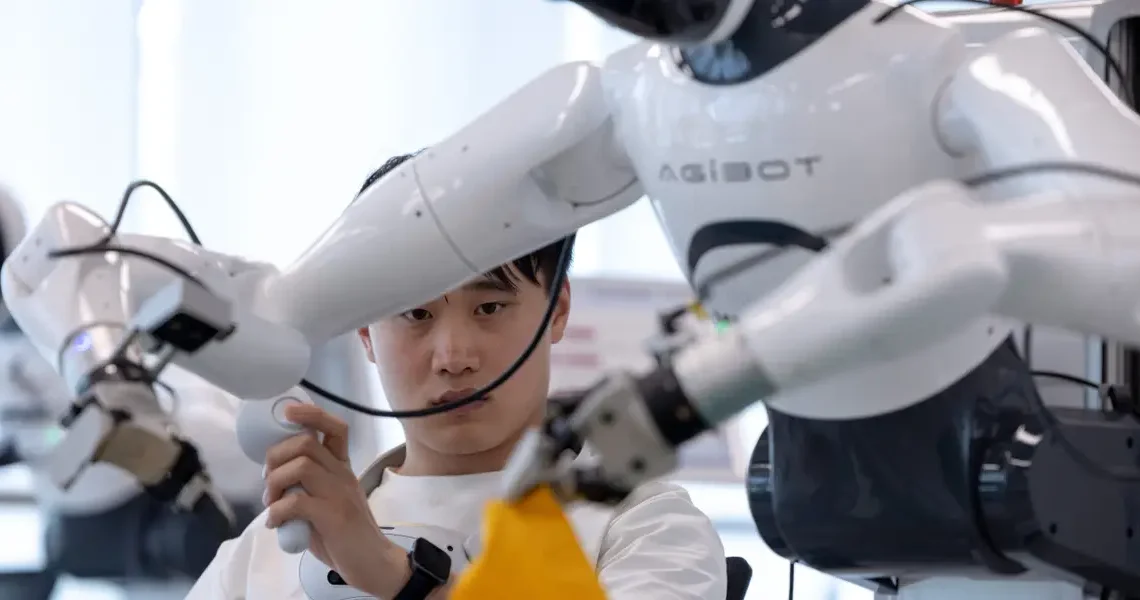Artificial intelligence may be driving a surge in productivity and pay — but that growth could soon slow.
That’s according to Ioana Marinescu, an associate professor at the University of Pennsylvania’s School of Social Policy & Practice and coauthor of a new Brookings Institution paper on what she and colleague Konrad Kording call “intelligence saturation.”
Their model suggests that as automation spreads, wages are likely to follow a hump-shaped trajectory — initially rising, then flattening, and eventually declining as machines take over more of the cognitive work that humans once performed.
However, that downturn isn’t inevitable.
Where we are on the curve
Marinescu estimates that more than 14% of “intelligence” tasks are already automated — a figure based on research showing that routine cognitive jobs have declined from 49% in the late 1970s and 1980s to 35% in 2018.
“This is closer to a potential decline in wages than no automation,” she told Business Insider.
In the baseline Brookings simulation, wages begin to fall when about 37% of intelligence tasks are automated — a threshold that could arrive sooner than many expect if AI adoption continues to accelerate.
So far, there’s no broad sign of that shift.
“It’s too early to tell,” Marinescu said.
Still, she pointed to “suggestive evidence” that less-experienced workers in AI-exposed jobs are already being displaced, citing a recent study by Stanford.
The study found that early-career workers, ages 22 to 25, in AI-exposed occupations such as software development and customer service have experienced a 13% decline in employment since the rise of generative AI, whereas employment for older and less-exposed workers has remained stable or increased.
Yet, Marinescu added, the real warning sign would be “a noticeable reduction in the overall share of intelligence jobs” across the economy — the moment the labor market begins to reallocate toward more physical work.
Why a wage downturn isn’t inevitable
Marinescu said that the outcome depends on how society manages the transition between the “physical” and the “intelligence” sectors.
“We think the two [sectors] are complements, like labor and capital — i.e., you need some of both to produce,” she said. “Automation is more likely to yield steady wage increases with complementarity; at the same time, the long-run gains from adding more AI in the economy saturate under complementarity.”
In other words, AI and human labor can raise productivity together — but only if automation is paired with real-world investment that keeps workers essential to the production process.
The Brookings paper said that the economy’s physical side — the factories, hospitals, construction, and infrastructure that AI still can’t automate — must keep pace with intelligence-sector innovation.
To prevent a wage collapse, the authors propose slowing the pace of automation and boosting investment in physical capital, ensuring that embodied work remains productive.
They also suggest taxing virtual labor to encourage companies to maintain a healthy balance between machine and human production — a proposal similar to Sen. Bernie Sanders’ call for imposing a “robot tax” on companies that adopt AI to replace jobs.
The real uncertainty, Marinescu added, lies in how substitutable AI and human output become.
If AI ultimately replaces most intelligence work, wage growth is likely to flatten.
However, if humans and machines remain complementary — each amplifying the other’s output — the economy could continue to expand without leaving workers behind.
Read the original article on Business Insider
The post AI pay gains could peak soon, but a Penn professor sees a way out appeared first on Business Insider.




